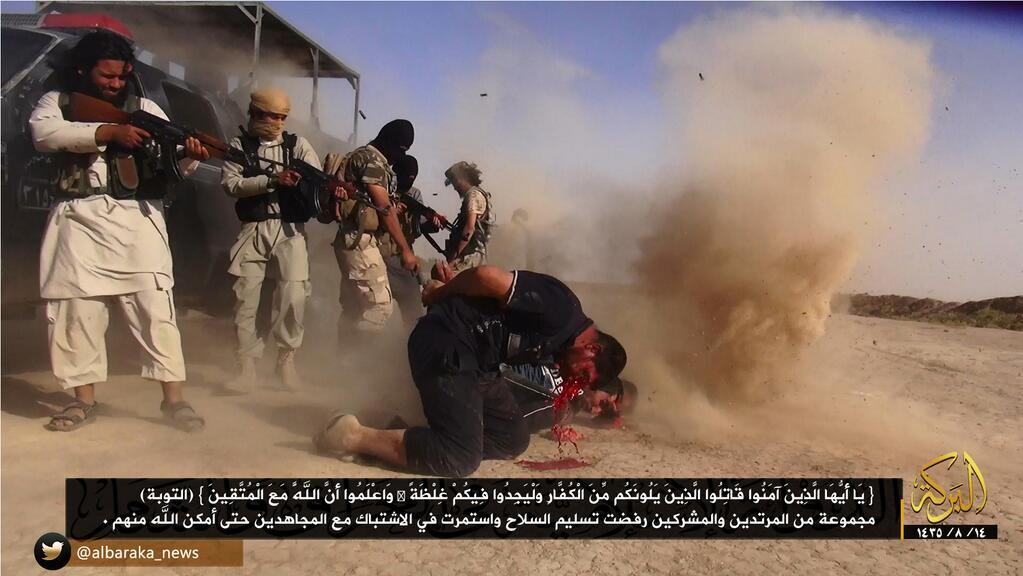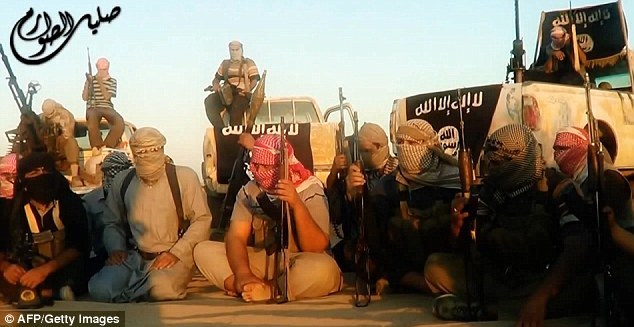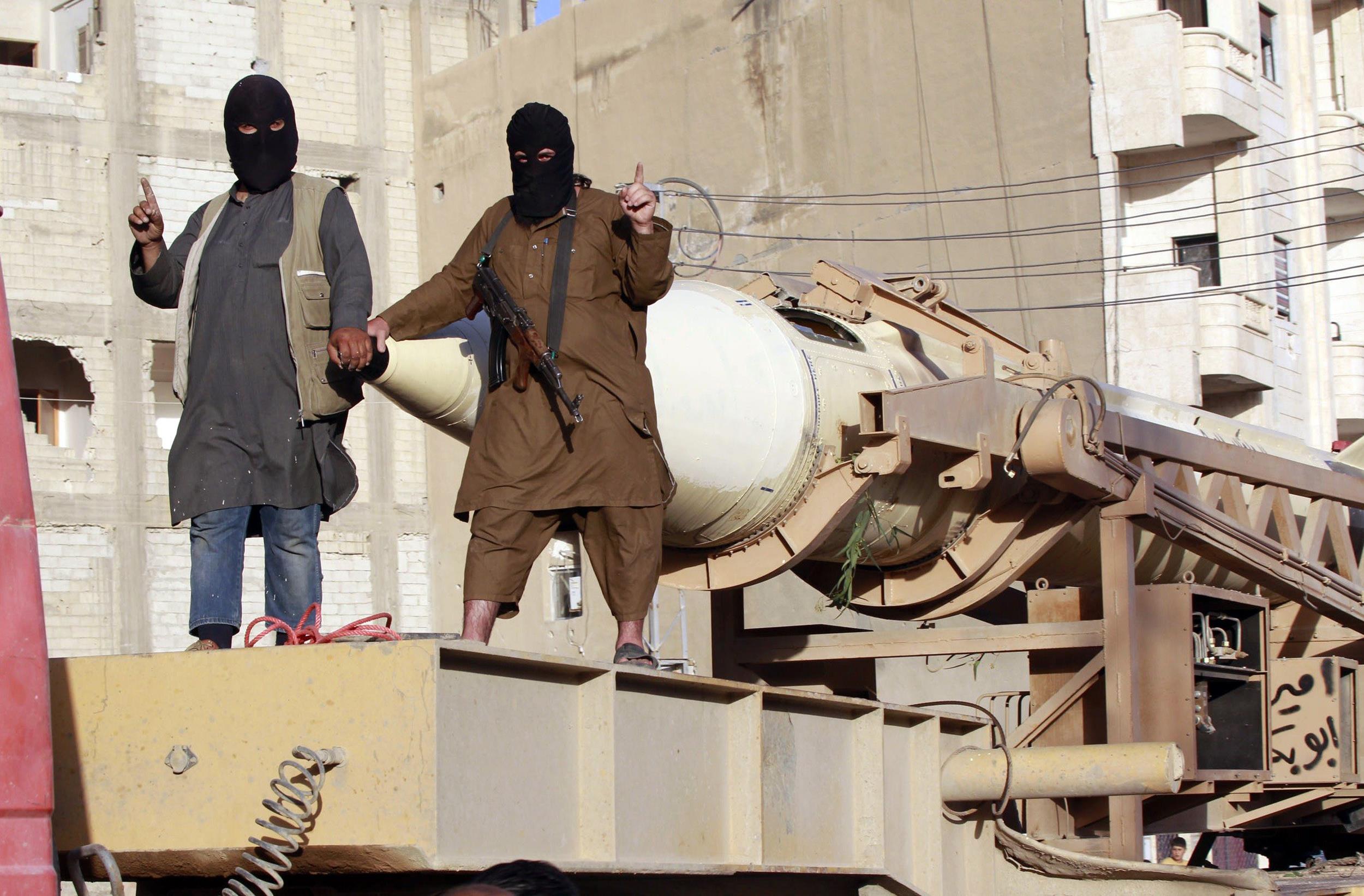Al Qaeda’s Re-launch in South Asia and the role of Deobandi militants – C. Christine Fair
Lost in the hubbub over the rise of the Islamic State and the Obama administration’s move to war in Iraq was the Al Qaeda core’s declaration of a new affiliate in South Asia—long a home to jihadist activity. C. Christine Fair, a colleague of mine at Georgetown, preeminent South Asia expert, and chef d’evil cuisine, explains why Zawahiri might find the region ripe for expansion.
On September 30, 2014, the head of al-Qaeda, Ayman al-Zawahiri, released a video in which he declared a revivified and more ambitious al-Qaeda presence in South Asia. This ostensibly newly branded franchise of al-Qaeda in the Indian subcontinent is called the Jamā‘at Qā‘idat al-Jihād fī Shibh al-Qārra al-Hindīya (the “Organization of the Base of Jihad in the Indian Sub-Continent” or simply Al Qaeda in the Indian Subcontinent, or AQIS). The leader of AQIS is a well-known Pakistani Islamic scholar with long-standing ties to al-Qaeda known by the name Sheikh Asim Umar. Umar has long operated freely in Pakistan, where he has authored many tomes such as Teesri Jang-e-Azeem aur Dujjal (“The Third World War and the Anti-Christ”), Dujjal ka Lashkar: Blackwater (“Blackwater: the Army of the Anti-Christ”); and Burmuda Tikon aur Dujjal (“The Bermuda Triangle and the Anti-Christ”). Notably, all of these publications are in Urdu and are widely available in Pakistan and on the Internet. Helpfully, the online versions provide a list of bookstores throughout Pakistan (along with their phone numbers) from which one may procure the tomes in question.
According to Zawahiri, AQIS would raise the flag of jihad in the subcontinent and usher a return to Islamic rule, which was the law of the land until the “infidel army” took it over and divided it. Zawahiri anticipated that AQIS would be welcomed by the Muslims in “Burma, Bangladesh, Assam, Gujarat, Ahmedabad, and Kashmir” and asserted that this new organization would liberate Muslims of South Asia from oppression and injustice.
What explains this move and its timing? How important is it?
Something Old and Something New
Despite the fanfare surrounding this announcement and claims to novelty, al-Qaeda has had a long and simmering presence in the South Asian subcontinent. Afghanistan, which sits at the crossroads of South and Central Asia, hosted al-Qaeda and its deceased supreme leader, Osama Bin Laden, from 1996 until late 2001, when the organization and its leadership dispersed into Pakistan, Iran, and elsewhere following the October 2001 U.S.-led invasion. As is well known, Afghanistan and Pakistan served as two of the most important countries in planning and executing the 9/11 terror attacks, which precipitated the U.S.-led military action in Afghanistan and sustained counterterrorism operations in Pakistan.
Mullah Omar, the leader of the Afghan Taliban, had long been wary of Bin Laden and requested that he keep a low profile. Bin Laden did not abide by Omar’s diktat and even masterminded the attack on the U.S. embassies in Kenya and Tanzania in 1998 from his Afghan redoubt. The attacks provoked U.S. retaliatory cruise missile strikes on al-Qaeda camps near Khost and Jalalabad in eastern Afghanistan. Following that affair, the Taliban made Bin Laden promise to desist from planning future attacks on U.S. interests from Afghanistan and even looked for ways of handing him over to an Islamic court. Despite these reservations, Bin Laden’s al-Qaeda continued to remain co-located with the Taliban, in part because handing him over would make it appear as if the Taliban were cowards deferring to foes of Islam.
While no al-Qaeda members of any consequence were killed in the cruise missile attacks, several Pakistani militants associated with Harkat-ul-jihad-e-Islami (HuJI) and Harkat-ul-Mujahideen (HuM) were. Both organizations are associated with the Deobandi interpretive tradition as are the Afghan Taliban and numerous other groups. HuJI and HuM were not the only Deobandi Pakistani groups to be co-located with the Taliban: the anti-Shi’a organizations Sipah-e-Sahaba-e-Pakistan (SSP) and Lashkar-e-Jhangvi (LeJ) also fled to Afghanistan in the 1990s to help the Taliban consolidate its hold over Afghanistan. Through this co-location with the Taliban, HuJI, HuM, SSP and LeJ forged ties with al-Qaeda.
When the Americans invaded, al-Qaeda and the Taliban leadership fled to Pakistan along with fighters from these Pakistani organizations. From 2001 onward, numerous senior leaders of al-Qaeda were captured in Pakistan purportedly with Pakistani assistance. While some writers, such as Bruce Reidel, argue that Pakistan’s army and its premier intelligence agency, the Interservices Intelligence Directorate (ISI), have been tightly allied with al-Qaeda, I do not share this view. From late 2001, al-Qaeda’s Deobandi allies began targeting the Pakistani state. By 2003, al-Qaeda denounced Pakistan’s then-military dictator and self-styled president, Pervez Musharraf, as a “traitor.” Later, in 2004, al-Qaeda encouraged Pakistanis to topple his government. In 2007, Bin Laden declared war on Pakistan.
From 2001 onward, many of the attacks that took place in Pakistan were imagined by al-Qaeda but executed by its Pakistani Deobandi “subcontractors” such as the LeJ and other groups. Al-Qaeda allies such as Jaish-e-Mohammad (JeM, another Deobandi group derived from HuJI and HuM) conducted numerous attacks in India. The most notorious was JeM’s December 2001 assault on India’s parliament, which brought India and Pakistan to the brink of war. These Pakistani Deobandi organizations facilitated al-Qaeda’s operations in Pakistan and even provided fighters. (In contrast to these Deobandi militants, Lashkar-e-Taiba—Pakistan’s most notorious terrorist organization—did not co-locate with the Taliban, maintained their own distinct training facilities in Afghanistan, and did not form these operational ties to al-Qaeda.)
Given al-Qaeda’s long-standing and complex presence in the South Asian subcontinent, what is new about this most recent move?
Mobilizing a Powerful Past to Compete with Islamic State’s Present
Al Qaeda in the Indian Subcontinent is weaving a new narrative of the future firmly rooted in the important past of Islam in South Asia. As is well known to Muslims of South Asia, by the sixteenth century much of what is now north India was under Muslim rule. In 1526, a new stint of Muslim governance began when Babar, a descendent of Genghis Khan, arrived in India. Babar defeated the last head of what was then known as the Delhi Sultanate and with that conquest founded the Mughal Empire in India. By 1707, the Mughal Empire included much of what are now India, Pakistan, Afghanistan, and Bangladesh. (It had no presence in contemporary Burma, Nepal, or Sri Lanka.) Mughal rule formally came to end in 1857 when the British dispensed with the remnants of the fledging political order. By the beginning of the eighteenth century, the Mughal Empire began to crumble, and by the close of that century had contracted to a few miles around Delhi.
However, for the Muslims of South Asia, it was the formal collapse of the Mughal Empire in 1857 that most poignantly signaled the decline of Muslim political and social standing. By harkening back to this longue durée of Muslim governance over the subcontinent, Zawahiri hopes to construct a differently imagined Muslim political order than that offered by al-Qaeda’s competition: the Islamic State (IS), which claims to have re-established the caliphate based in Iraq and Syria. Zawahiri’s AQIS is coming late to the party.
Udit Thakar has detailed some of the important milestones in IS’s own efforts to woo Indian Muslims. Thakar notes that on July 5, 2014, Abu Bakr al-Baghdadi gave his first public speech after appointing himself the “caliph” of the Islamic State. He mentioned India three times. First, he listed India as one of several countries in which Muslims’ rights have been denied. Second, he referenced the long-standing allegations of atrocities in Kashmir. Third, he explicitly stated that this new caliphate included India along with several other countries and territories. While it is impossible to say how this speech was viewed by India’s varied Muslim scholars, Maulana Salman Nadvi (of Lucknow’s Darul Uloom Nadwatul Ulama Islamic institute) endorsed al-Baghdadi role as “caliph.” Immediately, the All India Ulema Council and the All India Muslim Personal Law Board denounced Nadvi. While Nadvi may have been on the fringe in embracing IS, he was not alone. Kashmiri youth have been spotted carrying the black flag of IS. IS has also released recruitment videos in Hindi, Urdu, and Tamil. Equally disconcerting, some of India’s Muslims have left India to fight with IS in Syria and Iraq. Finally, in early September, IS distributed pamphlets in Afghanistan and Pakistan (in Dari and in Pashto) that claimed to have incorporated Iran, Afghanistan, and some Muslim Central Asian republics into this purported caliphate.
By invoking this golden past of Muslim political preeminence in South Asia, Zawahiri is hoping that South Asia’s Muslims will be more interested in restoring a their own long-lost glorious past than aiding IS’s stated mission of restoring the caliphate centered on the Arab Middle East and North Africa.
Ripe for the Picking?
In principle, South Asia’s Muslims should be ripe for the picking of IS and AQIS recruiters. After all, South Asia is home to many Muslims who face economic and social marginalization and extreme violence. For global Islamist militancy, South Asia is an important—albeit oddly neglected—theater. There are many times more Muslims in South Asia than there are in the Middle East. In India alone, Muslims comprise 13% of India’s overall population of 1.2 billion. This makes them one of the largest Muslim populations in the world—if not the largest—depending upon how accurate censuses are in India, Pakistan, Bangladesh, and Indonesia. While India’s Muslims are diverse and vary by ethnicity, language, level of education, and other measures of socio-economic standing, India’s own government concedes that they are among India’s most economically deprived communities and are consistently underrepresented in India’s public sector.
Zawahiri’s speech addresses specific locations that have become famous for violence against Muslims. He speaks of Kashmir, which has long been the victim of Pakistan-backed terrorist campaigns and often brutal efforts by Indian security organizations to contend with indigenous insurgents and Pakistani terrorists. Curiously, in the past al-Qaeda rarely made mention of Kashmir. Zawahiri also speaks of Gujarat (an Indian state) and Ahmedabad (a city in Gujarat), which was the initial site of the 2002 pogrom against Muslims for which few have been punished. In fact, Ahmedabad has a long history of anti-Muslim and other collective violence. By mentioning Gujarat, he explicitly calls attention to India’s new prime minister, Narendra Modi, who was the popular chief governor at the time. Modi, with his Hindu-nationalist background, attracts wide criticism because his detractors believe that he was responsible for the pogroms either by acts of commission or omission. With his checkered past, Islamist and militant ideologues can easily cast Modi as an enemy of Islam and Muslims.
While the turmoil in Kashmir and Gujarat are well known, Zawahiri also draws attention to Assam (another Indian state). Most recently, Assam has drawn media attention for clashes between Bengali-speaking Muslims and members of an indigenous tribe called the Bodos. Some Indian commentators decry calling this violence communal and instead claim that the violence in Assam has been decades in the making and is really about “outsiders” (Bengali-speaking Muslims) encroaching upon Bodo lands. Other commentators agree that it is not quotidian “communal violence” and instead call it a Muslim genocide.
But India is not the only place where both AQIS and IS aim to compete for the support of disenfranchised and victimized Muslims. Zawahiri also specifically mentions Myanmar (Burma), where Buddhists have long oppressed and even slaughtered Rohingya Muslims with fluctuating intensity for decades. Rohingyas are a Muslim minority who live in the Northern Rakhine state of Myanmar, which abuts Bangladesh’s Chittagong district. Myanmar, which is overwhelmingly Buddhist, recognizes numerous official ethnicities; however, it does not recognize the Rohingyas, claiming that the Rohingyas are Bangladeshi. As violence has ebbed and flowed against Rohingyas, who comprise nearly 90 percent of Northern Rakhine state, they have fled to neighboring Bangladesh. However, Bangladesh does not welcome them and insists that they are citizens of Myanmar. In effect, the Rohingyas are stateless. Their hapless circumstances are due to British colonization and decolonization: the British acquired parts of what is now Burma in 1824, and the boundary between Bangladesh and Myanmar was drawn across the territory that was home to Rohingyas. Now, neither Myanmar nor Bangladesh recognize the minority who suffer violence in Myanmar and abject neglect in Bangladesh. For many years, Rohingya refugees in Bangladesh have been targets for criminal and terrorist enterprises alike with varying degrees of success.
Ironically, in the case of Pakistan and even Bangladesh, the violence against Muslims is perpetrated by Muslims themselves. Militants tied to Pakistan’s own Deobandi Taliban organization (Tehreek-e-Taliban-e-Pakistan, or TTP, and sectarian groups like LeJ/SSP) have slain thousands of Pakistanis in uniform as well as civilians who espouse versions of Islam that the TTP denounces. In Bangladesh, militants have killed Sufis and Ahmadis as religious intolerance spreads in that country. In an early 2014 speech, Zawahiri encouraged Bangladeshis to engage in an intifada. In that speech, he declares that the bloodbath in both countries is due to “India, the corrupt leadership of the Pakistan army, and treacherous power hungry politicians of Bangladesh and Pakistan.”
Interestingly, Zawahiri leaves out the emerging situation in Sri Lanka, where Muslims have been increasingly marginalized and victimized. During the Tamil Tigers’ reign of terror, Muslims were not welcome because they were not Hindu. In the Sinhalese mainland, they have fared just as badly if not worse. Sri Lanka, which claims to be the homeland for South Asia’s Buddhists, has tightly knit notions of citizenship with Buddhist identity. In recent years, a Buddhist terrorist organization known as the Bodu Bala Sena (“Buddhist Power Force”) has targeted Hindus, Muslims, and Christians alike.
The Other Competition in the Subcontinent?
The Islamic State is not the only competition that Zawahiri is likely eyeing. For years, the preeminent terror organization operating in South Asia has been Lashkar-e-Taiba (LeT). Although LeT claims to be a transnational jihadi organization, for most intents and purposes, LeT restricts itself to India and Afghanistan. This is due to its long-standing ties with Pakistan’s intelligence agency, the ISI. Despite the fact that LeT follows the Ahl-e-Hadis interpretative tradition of Islam, which shares some affinity with al-Qaeda’s Salafist orientation, LeT and al-Qaeda have not been collaborators as many like to suggest. If anything, they have been competitors for the hearts and minds of South Asia. While al-Qaeda neglected Kashmir and India’s Muslims, LeT made this population a mainstay of its activities. No other organization in South Asia—apart from al-Qaeda—can plan and execute complex and coordinated attacks like LeT, which garnered international fame for its November 2008 multi-day siege on India’s mega port city of Mumbai. While LeT’s literature speaks of global jihad, the organization has perforce restricted itself to the South Asian subcontinent. Unlike rival Deobandi militant groups, LeT has never conducted any attacks in Pakistan, likely owing to its deep alliance with the Pakistani state. LeT has even denounced such anti-state activity in its publications, which only strengthens its utility to Pakistan’s deep state.
However, in recent years, some of LeT’s activists have disagreed with the organization’s pro-state policies and have joined the Pakistani Taliban or other organizations. It would be a great boon for AQIS if Zawahiri’s organization could lure greater numbers of disaffected fighters from this extremely competent organization. If Zawahiri could turn important elements of this organization against their erstwhile patrons, the Pakistani army would find itself in a predicament from which it could not easily escape.
Making Sense of It All
Thankfully, South Asia has been a largely untapped market for global Islamist terrorist groups. Given the long history of local Islamist terrorism, it makes business sense for al-Qaeda to re-launch its brand and reposition itself within the South Asian market, where al-Qaeda has mostly been known for fighting the “far enemy” rather than the “near enemy.” However, al-Qaeda also wants to stem the progress of IS in the same region by offering potential recruits an important alternative to traveling to Iraq and Syria to help IS establish a caliphate centered in the Middle East and North Africa. Instead, Zawahiri is offering South Asia’s Muslims an opportunity to reclaim their own glorious past and in doing so, liberate them from their current political, social, and economic malaise. However, Zawahiri is late to the battle for the hearts and minds of South Asia’s battered Muslims.
Despite the growing competition for potential recruits from the subcontinent, it is not certain that South Asia’s Muslims will flock to this new organization in significant numbers. South Asia’s Muslims are riven by differences in ethnicity, social and economic status, mother-tongue, and, most importantly, sectarian differences. However, because terrorism is a game of small numbers, even a few hundred fighters who embrace the AQIS mission can wreak havoc upon the region. For this reason, the United States and its partners in the region need to redouble their counter-terrorism, intelligence, and law enforcement efforts.
Source:
http://www.lawfareblog.com/2014/09/the-foreign-policy-essay-al-qaedas-re-launch-in-south-asia/






kafir kafir shia kafir, Sunni Barelvi Mushrik.